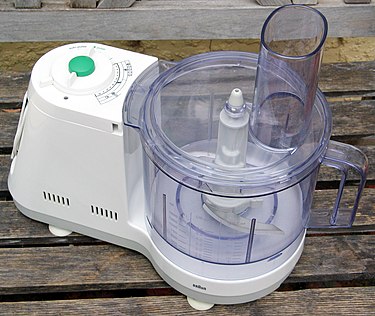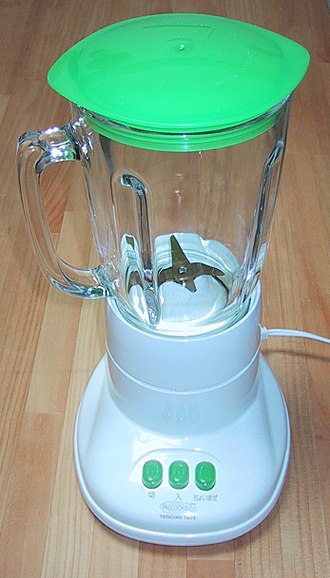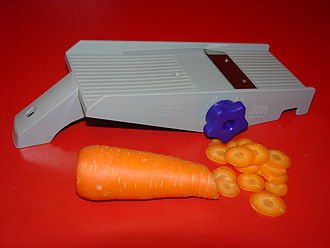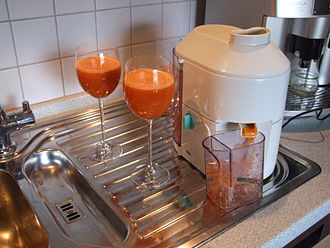When making meals, a food processor is a kitchen gadget that makes it simpler to do repetitive tasks. Although certain manual machines are occasionally referred to as “food processors,” the phrase is now nearly invariably used to describe an electric-motor-driven appliance. Meal preparation may be sped up by using food processors for tasks like blending, chopping, dicing, and slicing.
You can chop up huge food items like fruits, vegetables, and meat with the use of a food processor. You can whip up tasty smoothies, salsa, and other dishes fast with the aid of a food processor. Delicious quinoa and spaghetti recipes may also be made in a food processor. Another excellent use of a food processor is to disassemble complicated dishes into their component pieces.
Modern kitchenware now must have a piece for food preparation. Everything is done to give the best cooking experience and to make the cooking procedure as simple as possible. Food processors are the number 1 kitchen appliance in terms of popularity. The ability to multitask and prepare a range of dishes is the main justification for buying a food processor.
Functions of Food Processors
Depending on where the attachment or blade is placed and what type it is, food processors often perform a variety of tasks. A higher powerful motor may be needed for some of the more difficult activities, such as kneading stiff doughs, cutting fresh carrots, and shredding hard cheese. A food processor may be able to take on the functions of other appliances with the help of add-ons like blenders and juicer attachments.
Design and Operation of Food Processors
A motor for the device’s base rotates a vertical shaft. Around the shaft is a bowl, often composed of clear plastic. Cutting blades that fit to work close to the bottom of the bowl can be mounted to the shaft. Instead, cutting or shredding disks that revolve towards the top of the bowl can be added. The bowl is then covered with a lid that has a “feed tube.”
Ingredients may be added while cutting or slicing thanks to the feed tube. Additionally, it functions as a chute for introducing objects to disks for slicing or shredding. The user’s fingers are shielded by a “pusher” that may move into the feed tube.
Almost all modern food processors are equipped with safety features that prohibit the motor from turning on if the bowl or lid is not correctly fastened to the base.
Different types of Food Processors
Although the phrase “food processor” is typically associated with a countertop appliance or kitchen equipment that chops, slices, shreds, grates, or minces/grinds food, the term has a wide range of applications. Since they all function to prepare meals in some capacity, including manual choppers and juicers, they may all be simply incorporated. Even though they may look similar, not all food processors do the same tasks, and these distinctions are crucial to note when you are thinking about purchasing one. The different types into which food processors fall are:
Blenders
For blending and combining ingredients, blenders work well. While some models contain attachments or processing features for chopping, most blenders can only mix or blend soft foods or liquids. Some types can smash ice for blended cold beverages depending on the blade. Make the greatest blender choice for you with the aid of these suggestions.
Mandolines
Mandolines are basic kitchen appliances used to slice, shred, or grate food. These come in a variety of materials, such as plastic and high-quality stainless-steel units, and often include cutting blades of various diameters. Vegetables are often sliced by swiping them back and forth over the blades. The manual method is rapid. Mandolines are very simple to store and operate.
Cheese Graters
These come in a variety of forms and are often manual. They are mostly used for grating cheese and other things, such as vegetables. Most families have a variety of sizes and shapes. The most popular is the box design, where the cheese is shredded in the middle of the grater, but families now prefer the engaging rotary version, which is used in restaurants for hard cheeses like parmesan. The disc in certain electric food processors may be used to grate a lot of cheese.
Coffee Grinders
Coffee grinders should only be used for grinding freshly roasted coffee beans due to the appliance’s construction and blade shape. They are compact, affordable, and useful tools for grinding your beans to enhance the flavor of your coffee. Some coffee makers include a coffee grinder incorporated right into the machine.
Vegetable or Meat Grinders
There are manual and electric versions of these. They are extremely practical culinary equipment, mostly used for grinding with a range of discs for fine to coarse grinding. If you anticipate using this equipment frequently, seek an old meat grinder that is still in working order or use a grinder attachment on a bigger mixer.
Compact or Mini Choppers / Processors
Despite being referred to as processors, the capabilities of these devices are constrained. These 1 to 4-cup gadgets are used to chop nuts, onions, and spices as well as to prepare tiny quantities of sauces, salsa, veggies, and condiments. They are highly useful for regular chopping and mixing tasks as well as for repurposing leftovers to make baby food. Because they lack a feeding tube and cutting discs, these tiny choppers often have no slicing or shredding capabilities. When compared to more powerful instruments, these are frequently inexpensive.
Large Food Processors
These are sometimes referred to as food processors and come in capacities ranging from 5 to 12 cups. One disc (circular blade cutter) that allows at least some slicing, grating, and shredding is frequently found in a 5 to a 9-cup food processor. Power performance and the number of accessories have an impact on these devices’ prices. Although it will cost more, a big food processor with many discs, a dough hook, and a smaller work bowl will be useful for a variety of tasks.
How can you know what use a specific food processor serves? Look at the unit’s design and accessories. A feeding tube design, which is required for adding meals to be sliced or shredded, will not be present in a processor that just chops. Some food processors might only come with a few attachments, but additional ones might be sold to provide more functionality.
Hand-Operated Ricers
Creative chefs have developed this long-used culinary tool, employing it to push through various soft-cooked vegetables or fresh noodles in addition to its original usage of ricing potatoes. These instruments are especially useful if you enjoy creating mashed potatoes or if you want to make a lot of homemade baby food.
Juicers
Fruits and vegetables are processed differently by juicers because they separate the juice from the pulp. A food processor cannot accomplish this. Despite being more costly, electric juicers are more common than manual ones since they need less work.
Hand-Held Salad Slicers
Hand-held salad slicers are made to be held while chopping vegetables into a salad or other dish, saving time. They are simple to use and simple to keep and clean.
Hand-Operated Food Choppers
A hand slap on the top of the instrument activates the blade assembly to begin chopping when you place the food in small amounts in the device or on a cutting board. These are great for dicing and chopping, and they frequently cannot contain a lot of food. Some types may be turned by hand in a rotational motion. These little choppers may be quite useful for short, minor chopping and dicing jobs since they are inexpensive, simple to store, and straightforward to use.
Conclusion
Having a trustworthy food processor on hand will help you become the master chef even if you are a beginner in the kitchen without becoming tired or frustrated. Thanks to your food processor, it could seem as though it was prepared by a skilled chef. You should immediately get a food processor for your kitchen now that you are aware of its benefits.




